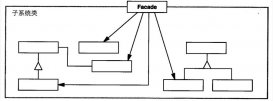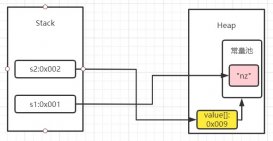了解过spring-Boot这个技术的,应该知道Spring-Boot的核心配置文件application.properties,当然也可以通过注解自定义配置文件的信息。
Spring-Boot读取配置文件的方式:
一.读取核心配置文件信息application.properties的内容
核心配置文件是指在resources根目录下的application.properties或application.yml配置文件,读取这两个配置文件的方法有两种,都比较简单。
核心配置文件application.properties内容如下:
|
1
|
test.msg=Hello World SpringBoot |
方式一:使用@Value方式(常用)
|
1
2
3
4
5
6
7
8
9
10
11
12
13
14
15
16
|
package Solin.controller; import org.springframework.beans.factory.annotation.Value; import org.springframework.web.bind.annotation.RequestMapping; import org.springframework.web.bind.annotation.RestController; @RestControllerpublic class WebController { @Value("${test.msg}") private String msg; @RequestMapping("/index1") public String index1(){ return "方式一:"+msg; } } |
注意:在@Value的${}中包含的是核心配置文件中的键名。在Controller类上加@RestController表示将此类中的所有视图都以JSON方式显示,类似于在视图方法上加@ResponseBody。
访问:http://localhost:8088/index1时得到:"方式一:Hello World SpringBoot"
方式二:使用Environment方式
|
1
2
3
4
5
6
7
8
9
10
11
12
13
14
15
16
17
18
|
package Solin.controller; import org.springframework.beans.factory.annotation.Autowired; import org.springframework.beans.factory.annotation.Value; import org.springframework.core.env.Environment; import org.springframework.web.bind.annotation.RequestMapping; import org.springframework.web.bind.annotation.RestController; @RestControllerpublic class WebController { @Autowired private Environment env; @RequestMapping("/index2") public String index2(){ return "方式二:"+env.getProperty("test.msg"); } } |
注意:这种方式是依赖注入Evnironment来完成,在创建的成员变量private Environment env上加上@Autowired注解即可完成依赖注入,然后使用env.getProperty("键名")即可读取出对应的值。
访问:http://localhost:8088/index2时得到:"方式二:Hello World SpringBoot"
二.读取自定义配置文件信息,例如:author.properties
为了不破坏核心文件的原生态,但又需要有自定义的配置信息存在,一般情况下会选择自定义配置文件来放这些自定义信息,这里在resources目录下创建配置文件author.properties
resources/author.properties内容如下:
|
1
2
|
author.name=Solin author.age=22 |
创建管理配置的实体类:
|
1
2
3
4
5
6
7
8
9
10
11
12
13
14
15
16
17
18
19
20
21
22
23
24
25
|
package Solin.controller; import org.springframework.boot.context.properties.ConfigurationProperties; import org.springframework.context.annotation.Configuration; import org.springframework.stereotype.Component; //加上注释@Component,可以直接在其他地方使用@Autowired来创建其实例对象 @Component@ConfigurationProperties(prefix = "author",locations = "classpath:author.properties") public class MyWebConfig{ private String name; private int age; public String getName() { return name; } public void setName(String name) { this.name = name; } public int getAge() { return age; } public void setAge(int age) { this.age = age; } } |
注意:
在@ConfigurationProperties注释中有两个属性:
- locations:指定配置文件的所在位置
- prefix:指定配置文件中键名称的前缀(我这里配置文件中所有键名都是以author.开头)
使用@Component是让该类能够在其他地方被依赖使用,即使用@Autowired注释来创建实例。
创建测试Controller
|
1
2
3
4
5
6
7
8
9
10
11
12
13
14
15
16
17
|
package Solin.controller; import org.springframework.beans.factory.annotation.Autowired; import org.springframework.stereotype.Controller; import org.springframework.web.bind.annotation.RequestMapping; import org.springframework.web.bind.annotation.ResponseBody; @Controllerpublic class ConfigController { @Autowired private MyWebConfig conf; @RequestMapping("/test") public @ResponseBody String test() { return "Name:"+conf.getName()+"---"+"Age:"+conf.getAge(); } } |
注意:由于在Conf类上加了注释@Component,所以可以直接在这里使用@Autowired来创建其实例对象。
访问:http://localhost:8088/test时得到:"Name:Solin---Age:22"
以上就是本文的全部内容,希望对大家的学习有所帮助,也希望大家多多支持服务器之家。
原文链接:http://blog.csdn.net/qq_32786873/article/details/52840745

















